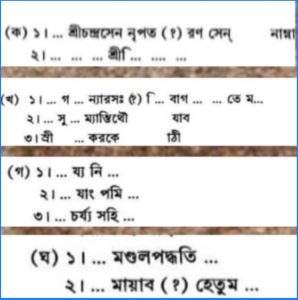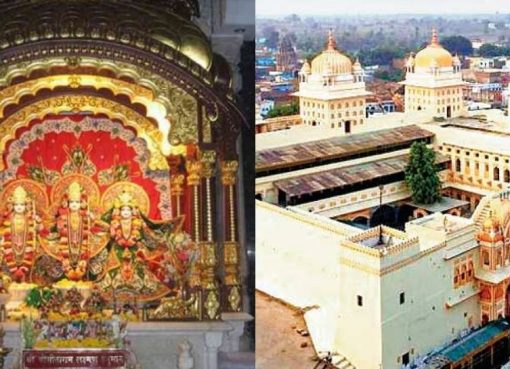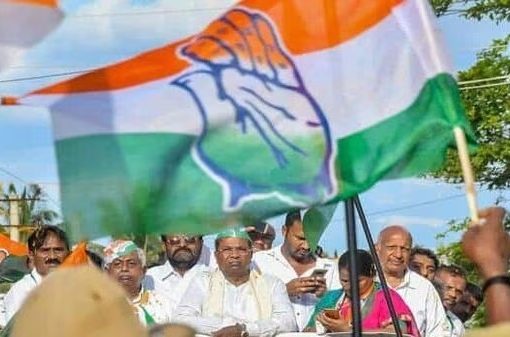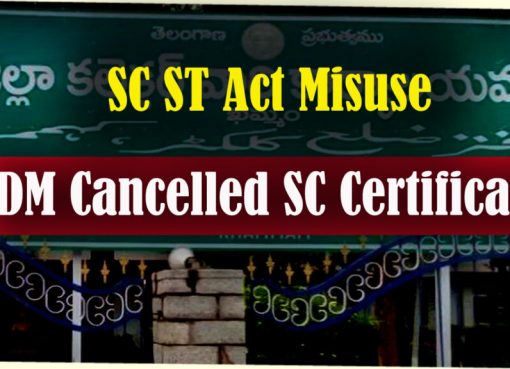– -Jyotishman Sarkar
As part of a major development of late, a number of coins have been unearthed on the banks of the Bñashaili river close to Murarai village in Birbhum, notable district in the Indian state of West Bengal. In accordance with fresh reports published in Anandabazar Patrika, premier Bengali Daily, 9 coins have been gotten by 3 individuals.
These gold coins found on the banks of rivers in Rampurhat sub-division are called ‘Fanams‘ and generally weigh less than half a gram. The diameter is only between 0.5 and 0.8 millimeters. Are there more salient features? The obverse of the coin shows the portrait of a bull seated on a ground, along with other symbols. On the secondary side, ‘স’ letter is written, with ankush or trishul .Below this is a number indicating the regnal year. They used a numerical method. Three of the recovered coins appear to have the numeral ‘5’ engraved on them.
Following an intense concentration on the coinage of the 4th Bhanudeva of the Ganga dynasty, as per Professor Sutapa Singh of the Department of Islamic History and Culture of the University of Calcutta, that these gold coins do belong to a king of the Eastern Ganga dynasty of Odisha. Well, there are other distinct views as well. According to Sri Anirbanjyoti Singh, local history researcher, this coin is associated with the Sena dynasty as well as the Ganga dynasty. He said evidently, “It’s the Sena kings of the area ,(Vira Nagar) where gold coins of such antiquity ,have been found ruled here. This Sena dynasty here had connections with Bhadisvara or Bhadreshwar Sena, and even Paikar.” **[ Keshav Sen, son of Bhadra Sen, Laxman Sen, is discussed in detail below]
There is hardly any doubt to the fact (as instituted by recurrent researches) that such coins were in wide circulation in 1400 AD. But this coin cannot be called a Ganga coin on the grounds that , one type of Fanam coin of Bhanudeva IV has been found. From the 11th to the 11th century, various dynasties in India issued fanamic coins. Large empires like Chalukya Vijayanagara and even some Small kingdoms of the 17th and 18th centuries also used fanam coins. Hence, there is a strong likelihood that this is nothing except for a coin of acclaimed Sena dynasty.
How can there be such strong deductions? The question is innate to any inquisitive reader. And here the answer is, the deduction is not without reasons and several parameters do contribute to this synthesis.
To begin with, the region had been under the suzerainty of Sena dynasty rule from the 11th to the 13th century. And prior to the expedition of Shah Sufi, Jafar Khan Ghazi in 1290 AD, the Turkish rule was not strong in Rarh.
Secondly, the coins issued at Devikot by Bakhtiyar in Bihar province, were made of gold because gold coins were in circulation (this region of North Bengal was not written as Gaud . Devikot in Towakat e Nasiri was written as part of Bihar)*
Thirdly, a scrupulous look at the history of the coinage of the Sena kings does reveal references to Karpadaka (Kawdi) and Purana (Silver coin). Tawakat e Nasiri also mentions that Lakshman Sen used to donate silver coins.
Now, if anyone considers that gold coins were completely unknown to the Sena rule, the concerned individual is quite mistaken. Gold coins are widely mentioned in Ballal Charit .The mention of gold coins is less than that of silver coins. One of the reasons for this was the dispute with the gold merchants. There are a few such mentions in Ballalacharita.-
Dispute between Ballal Sen and Shresthi Vallabhananda:
King Ballal Sen ask to borrow one and a half crores of gold coins from a rich man named Ballabhananda during the war against the king of Odantapur . But in return Ballabhananda demanded the revenue of Harikel, that incensed Ballal Sen a lot. Being vindictive, double tax was inflicted on merchants. If that did not work, he placed the merchant representatives invited to the banquet in the ranks of the Shudras. The merchants also refused the invitation to dine in the royal palace as they objected to eating with Satshudras. When the merchants protested, prince Bhimsen (another son of Ballal) abused them. Enraged, the merchants left the banquet.
Ballal Sen was further enraged by this and treated the merchants with contempt and reduced them to the level of Shudras and deprived them of their right to Upanayana. The merchants then paid the slave soldiers (দাস). Ballal Sen also promoted the Kaivartas. At last the traders were no longer Vaishya.[20]
 The coinage of the Senas was certainly affected thereafter (silver coin replaced gold) but metal coinage did not stop completely.
The coinage of the Senas was certainly affected thereafter (silver coin replaced gold) but metal coinage did not stop completely.
The names of the coins are regularly mentioned in various inscriptions of the Sena period, such as the Puranas, ‘Drona’, ‘Drama’. These terms were used to refer to a silver coin weighing 32 rati (56.6 Grain ≈ 3 Gram). The term Kapardaka & Purana appears as a medium of exchange in the writings of Sena kings and other contemporary kings. Karpadak means ‘Kawdi’; And ‘Purana‘ must be some kind of silver coin.
The ‘Kapardaka-Purana‘ link refers to a medium of exchange. A traditional Bengali arithmetical table holds that the quality of a silver coin (purana or drama) is proportional to 1260 kawdis.
Division of Sena Empire and Western Sena Empire:
‘চতুর্বিংশোত্তরে শাকে সহস্রৈক শতাব্দীকে ।
বে হার পাটনাত্ পূৰ্ব্বংৰ্ব্ব তুরস্কঃ সমপুাগতঃ।।'[ 13]
Gaudeshwar Keshav Sen (1206-1217 CE)
After Madhav Sen’s asceticism, Keshav Sen became the ruler of Gaur. He was a pious emperor and a great warrior, Saura upasak, in personal life.
It is written in Hari Mishra’s Karika,
बल्लाल तनयो राजा लक्ष्मणोवत महाशयः
ततपत्रु केशवो राजा गौड़ राज्यंबि हाय स: “[2][8]
Narrated by Kulcharya Edu Mishra
“नपृंतांकेशवो भपूति सेन्यबिप्रगनौ:
पितामहकृतै रणौश्च यक्तगेतः तां चक्रे
नपृतिर्महर्मादरतया सन्मानयन जीविकां
तदवर्गस्य च तस्य च प्रथमतश चक्रे प्रतिष्ठान्वित” [1][2]
This was also the period when Muhammad Ali Mardan attacked Gaud from Devikot. [2] [4] thanks to a band of treasonists, unfortunately the Khiljis did succeed to conquer Gaud in 1215 AD. Keshav Sena then migrated to Rarh and established his capital at Rajnagar.[2]
 During this time the Rardh region was secured by Keshav Sen and the Bengal region by Vishwarup Sen. [12] Minhaj writes that Jajnagar or the northern part of Utkal was under Maharaja Lakshman Sen. Keshav Sen was able to retain the ancestral rights of Utkal. He ruled from Rajnagar in Birbhum to Odisha, Jajnagar. He collected troops from Lakshnor or Rajnagar and Orissa several times to reconquer Gaur. [11] In religious belief he was a sun worshiper (‘Paramsaura’).[1.]
During this time the Rardh region was secured by Keshav Sen and the Bengal region by Vishwarup Sen. [12] Minhaj writes that Jajnagar or the northern part of Utkal was under Maharaja Lakshman Sen. Keshav Sen was able to retain the ancestral rights of Utkal. He ruled from Rajnagar in Birbhum to Odisha, Jajnagar. He collected troops from Lakshnor or Rajnagar and Orissa several times to reconquer Gaur. [11] In religious belief he was a sun worshiper (‘Paramsaura’).[1.]
He is known by various names -—
समस्त सप्रुस्तपेत अश्वपति गजपति नर पति राजत्रयाधि
पति सेनकुलकमल विकाशभास्कर सोमवशं प्रदीप
प्रति पन्नदा न कर्णसर्ण त्यव्रत गांगेय शरणगतबज्रपथंर परमेश्वर परमभट्टारक परमसौर महारा
जराजाधि राजारि राज धातकु शंकर गौड़ेश्वरा“[2]
Downfall of Gauda and Western Sen Empires:
Bir Sen: After Keshav Sen, Bir Sen became the king. In 1223 AD Ghiyasuddin Ewaz Khilji attacked Rardh. Bir Singh, the Samant of Birsinghpur, fought with Bir Sen in this battle. Ghiyasuddin Ewaz was defeated and fled. [11]Two more warriors Rudra Narayan Roy and Bir Singh’s brother Chaitanya Singh fought bravely in the Battle of Birsinghpur.[18]
Bir Sen and Bir Singh:
But in the second war the Hindus did not take up arms and were defeated. Yuzh fought with a herd of cows in front. Women observe Jawahar Vrata.[17] At this time the Khiljis captured Rajnagar (Lucknour) and Raja Bir Sen moved west. He established a new capital at Chandrapahari. The Western Sen Empire collapsed. Many new small kingdoms were created (e.g. Valki, Kanksha, Malla, Shikhara, Triveni, Vediyabaliya-Vasanti, Chatna, Ujani, Mandar, Chandra Pahari)[11]
Chandra Sen and Bhadra Sen:
Vir Sen’s son Chandrasena had his capital at Chandra Pahari & Bhadrasena’s capital was at Bhadrakali.[11]
There is also an inscription of Chandra Sena of Chandrapahadi (of the Western Sena dynasty.) written…..
চন্দ্র সে ন নপৃ তি রণসে ন নাম্না।[10][14]
This stone inscription is found in Hossain Shahi Mosque of Katwa. This mosque is undoubtedly built over a Vishnu temple.** while the temple built by Chandra Sen was most likely destroyed during the invasion of the Ghazis in Mangalkot. [16][9]
Sudarshan Sen: He was defeated by King Mahendra Singh of Gopabhum. He was the last king of Sen dynasty. His name is mentioned as Gaudeswara Sudarshan Sen in Sadgop Kulji.[15]
Western Sena Empire:
After Lakshman Sen’s death, his sons Keshav and Vishwarupa Sen resisted several Turkish attacks. And the most incredible was the utter defeat of Ghiyasuddin Ilyas Khilji in 1225, when Vishwarupsen defeated the গর্গ (Garga, Garjha or Oguz Turk) tribe and recaptured Gaur.[3] [5]
After the death of Lakshman Sen, after the death of Lakshmana Sen, the Sena empire was divided into 2 parts . Keshav got the western part and Visvarup got the eastern part.
We find mention of it in ‘Sadvaidya Kul Chandrika’ by Jayasena Biswas. [8]
শ্রীমল্লক্ষ্মণসে নস্য জজ্ঞিরে পুত্র কাস্ত্রয়ঃ ।
ধৰ্ম্মপালসুতারাঞ্চ বসুদেধ্যাস্তনদ্ভূবাঃ।
অগ্রজো মাধবস্তেষু পূৰ্ব্বমেৰ্ব্বমেব দিবং যযৌ ।
কেশবো বিশ্বরূপশ্চ রাজ্যভাঞ্জৌ বভূবতুঃ ॥
পূর্ব্বরর্ব্বাজ্যং রামপালং বিশ্বরূপোঽমজুজোঽশিষৎ।
কেশবঃ পশ্চিমে ভাগে গৌড়াখ্যেহভূন্নরাধি পঃ ।
স লাক্ষ্মণেয় নাম্নাসী প্রসিদ্ধঃ পিতৃনামতঃ।
জানে ন কর্ণ:র্ণ শৌর্য্যেণ ভীমঃ পরমধাৰ্ম্মিকঃ ॥
তাস্যামাত্যঃ পশুপতিরভূ বিশ্বাসঘাতকৃৎ ।
যো লোভেন যবণায় সমাপৎ
রামপালং গতং ভূপং মন্ত্রণায়ানুজেন সঃ।
বিদিত্বা পাপকগ্রাত্রৌ দুর্গদ্বারমপাবৃণোৎ ।
এবঞ্চ দর্শনে তস্যাভিষেকাদ্বৎসরেশুভে ।
That is, Keshav got Gaur and Vishwarup got Rampal Pradesh. In the absence of Maharaja Keshav, a minister named Pashupati opened the gates of the fort.[8.]The capital Lucknowti was captured.
- Pashupati Misra was one of the important members of Laxman Sen’s royal court .
- This indicates that officials in the Sen state were quite corrupt [7].
Keshav Sen established a new capital at Lucknour and tried to recover Lakhnauti.
In spite of this plight, Keshav received no help from the Eastern Sena Empire. Sri Nagendranath Bose cites family feuds for that [5]. Alimardan came from Devikot in 1215 AD and took over. Minhaj writes that Alimardan brought Lakshmanavati/Lakhnauti under his control.[5][8]
Timings of aforementioned coins:
On one side of the coin is a bull (Nandi) and on the other side a ‘Trishul’ was minted . So it has got to be the coin of a Saiva ruler. And since the Sena rulers were obligated of Shaiva doctrine, copperplates bore the Sadasiva symbol. So there is a strong possibility that the coins belong to the Sena kings.
Shaiva Sena kings used to perform Charak Puja on the occasion of New Year. In this festival ‘Gajan’ and Neeil Puja of Shiva were celebrated. In Mithila (Indian state of Bihar), Shiva’s Gajan is still celebrated as Lakshman Sambat. The main festival of the Nath Panthis was Charak. We learn from Ballal Charit that in early life Ballal Sen was initiated into Nath Pantha. But later changed his mind and became a Shakta .
When Lakshmana Sen was born Ballalal Sen conquered Mithila and started Lakshmana Sambat. Although historians differ about initiation of this calendar year, the majority of them does agree that its first year commenced in 1118–1119 AD.[19] Maithili scholars say that Vidyapati used Lakshmanabda and Shakabda in his writings.[7]
The word 5 inscribed on this coin probably refers to Lakshman Samvat. It is probably during this period that the city of Lucknour in Birbhum was built by Ballal Sen. Very close to it is the existing Radheshwar Shiva temple established by Ballal at Bardhaman. This temple was probably built during that period. So these coins were issued by 1123 AD. Later when Lakshmana Sen conquered Kalinga, the Ganga dynasty started minting Fanam coins.
*During this period Ganges coursed through North East of Malda. Lakhnauti Gaur (Malda) was situated to the south of the Ganges and Devikot to the north of the Ganges [3]
Reference –
1.পাল-সেন যুগের বংশানচুরিত , Dr. Dinesh Chandra Sarkar
2.বঙ্গের জাতীয় ইতিহাস (“National History of Bengal” – Rajanya Kand), Nagendra Nath Basu,302,347,354,357 page
3. গৌড়ের ইতিহাস রজনীকান্ত চক্রবর্তী 193
4.বংশ পরিচয়, জ্ঞানেন্দ্রনাথ কুমার। তৃতীয় খন্ড pp 468
5. National History of Bengal ‘Rajanya Kand. Nagendra Nath Basu 357
6. West Bengal District gazeters Birbhum – Durgadas Majumdar Pp 91
7. ঢাকার ইতিহাস-যতীন্দ্রমোহন রায় 2nd part,Pp 369,404,415
8. Brihat Banga – Dinesh Chandra Sen. 541 page
9.পশ্চি মবঙ্গের সংস্কৃতি – বিনয় ঘোষ Pp 285
10.গোপভূমের স্বরুপ ঐতিহ্য ও সংস্কৃতি শি বশঙ্কর ঘোষ pp 309
11.বীরভূমের ইতিহাস (History of Birbhum), Gaurihar Mitro, pp. 36-41
12. Sad Vaidya Kool Chandrika Jaisen Viswas
13.ঢাকার ইতিহাস- শ্রী যতীন্দ্রমোহন রায় দ্বিতীয় খন্ড
14. বর্ধমান সমগ্র – শ্রী গোপীকান্ত কুমার pp 487
15. সদগোপ কুলীন সংহিতা 24 page
16.Source: Bardhaman Samagra – Gopikanth Konar 487
17.SAFFRON SWORDS Centuries of Indic Resistance to Invaders, Manoshi Sinha
18.West Bengal District gazetteers Birbhum – Durgadas Majumdar Pp 92,93,95
19.হরপ্রসাদ শাস্ত্রী রচনা সংগ্রহ (দ্বিতীয় খণ্ড) pp 785
20.শ্রীমদানন্দ ভট্ট-বিরচিত বল্লাল-চরিতের বঙ্গানুবাদ, শ্রীদীননাথ ধর, বি. এল. কর্তৃক অনুবাদিত
(The author is B. Tech in Ceramic Technology)







Comment here
You must be logged in to post a comment.